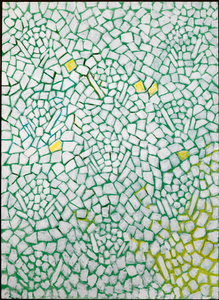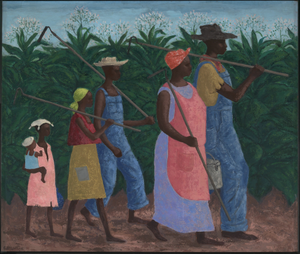Description
Edwards created Tambo in 1993 to commemorate Oliver Tambo, the president of the African National Congress, who, with Nelson Mandela, transformed the ANC in the mid-1940s into an activist organization that called on South Africa’s black population to engage in nonviolent forms of civil disobedience against apartheid laws. Tambo is a sculpture of allusion and history, an assemblage of steel implements that speak to their original industrial origins, and to metaphorical possibilities. The I-beam fragments and wrenches allude to Tambo’s efforts to repair society; the shovel and spear symbolically honor the son of peasant farmers who devoted his life to securing equality for South Africa’s black residents.African American Art: Harlem Renaissance, Civil Rights Era, and Beyond, 2012Melvin Edwards named this work after Oliver Tambo, who worked to establish racial equality in South Africa. Tambo co-founded the African National Congress Youth League and served as the Congress's leader while Nelson Mandela was imprisoned from 1964 until 1990. Edwards created this memorial after Tambo died in 1993 to tell the story of how blacks abolished apartheid and rose to power in South Africa. The spike, for example, is part of a harrow, which was both a common implement of torture and an agricultural tool used to break up plowed ground. The chain evokes the bondage of black South Africans as well as the strength of political organizations like the African National Congress.
Welded Steel
Smithsonian American Art Museum, Museum purchase through the Luisita L. and Franz H. Denghausen Endowment and the Smithsonian Institution Collections Acquisition Program





















